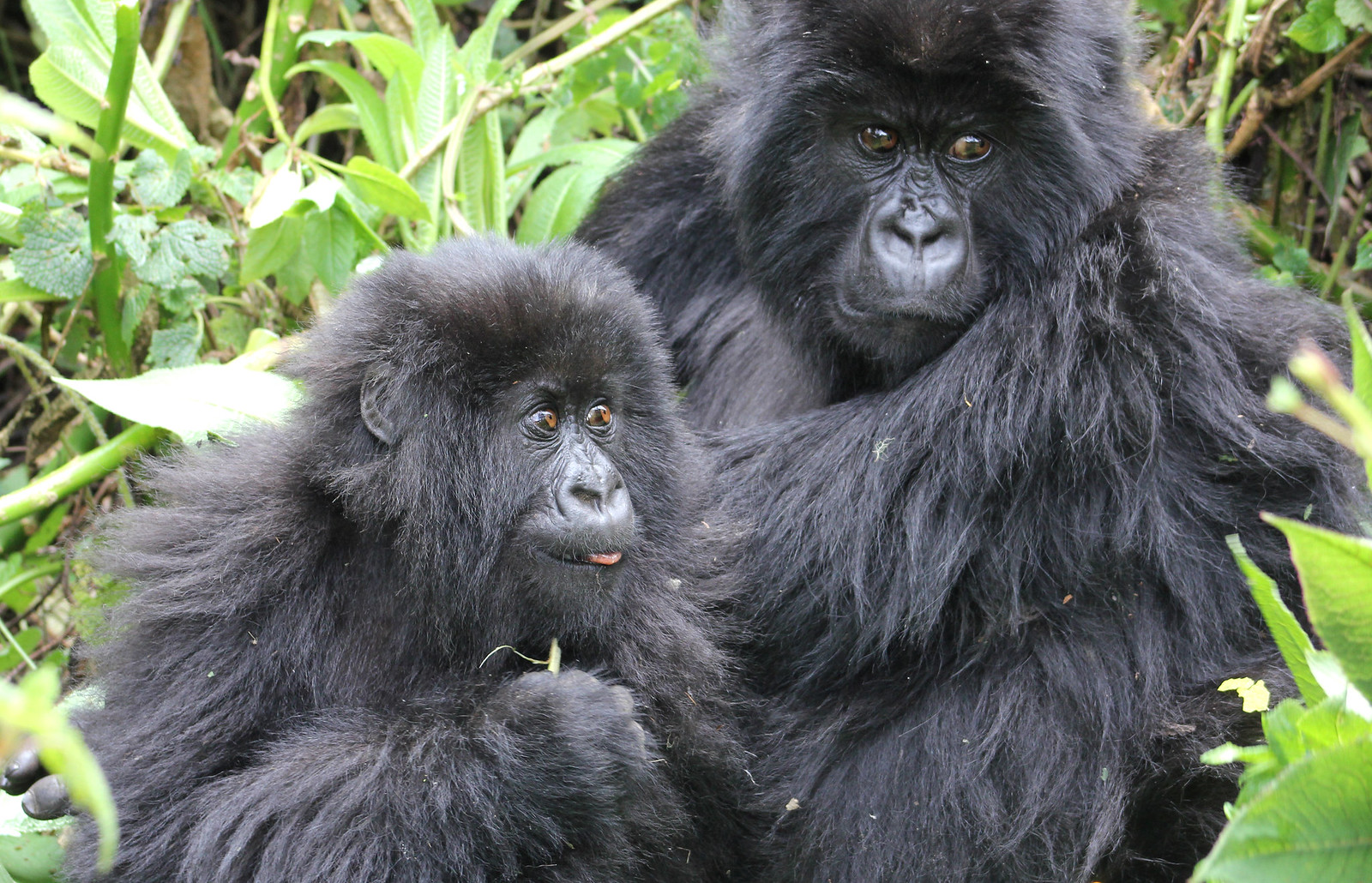Uncovering the Plight of the Mountain Gorilla: 10 Facts and Ways to Make a Difference
The mountain gorilla (Gorilla beringei beringei) is a subspecies of the eastern gorilla and is one of the most endangered primates in the world. They are found in the Virunga Mountains of Central Africa, specifically in four national parks: Mgahinga Gorilla National Park in Uganda, Volcanoes National Park in Rwanda, Virunga National Park in the Democratic Republic of Congo and Bwindi Impenetrable National Park in Uganda.

Mountain gorillas are large primates, with males weighing up to 440 pounds (200 kg) and standing up to 5.6 feet (1.7 meters) tall when standing upright. They have a distinctive black fur, with silver hairs on their back and shoulders, which is where the name “silverback” comes from.
The fur of mountain gorillas is longer and thicker than that of other gorilla subspecies to help them survive in colder temperatures. They live in higher elevations than other gorillas, and thus have to adapt to the colder weather.

- FOUND IN AFRICA : Mountain gorillas are only found in a small region of Africa, specifically in the Virunga Mountains of Central Africa and in the Bwindi Impenetrable National Park in Uganda. The Virunga Mountains span across three countries: Rwanda, Uganda, and the Democratic Republic of Congo. This small range of habitat makes conservation efforts even more crucial.
- VEGETARIAN DIET : Mountain gorillas are vegetarian and mostly eat leaves, stems, bamboo, and fruit. Their diet is seasonal and can vary depending on what food is available in the area. They are known to consume over 100 different plant species.
- FAMILY ORIENTED : Mountain gorillas live in groups led by a dominant male, known as a silverback. These groups, also known as troops, can have up to 30 individuals and are usually made up of related females and their offspring. The bond between family members is strong and gorillas have been observed showing affection towards one another.
- CLOSELY RELATED TO HUMANS: Mountain gorillas are closely related to humans, sharing 98% of their DNA with us. This makes studying gorillas an important tool for understanding human evolution and behavior.
- INTELLIGENT AND SOCIAL: Mountain gorillas are known for their intelligence and have been observed using tools and communicating with each other using a variety of vocalizations and gestures. They have complex social structures and hierarchies within their groups.
- THICKER FUR FOR COLD TEMPERATURES: The fur of mountain gorillas is longer and thicker than that of other gorilla subspecies to help them survive in colder temperatures in the high altitude areas where they live.
- ENDANGERED SPECIES: Mountain gorillas are critically endangered, with an estimated population of around 1,063 individuals in the wild. Habitat loss, poaching, and disease are the biggest threats to mountain gorilla populations. Conservation efforts, such as protected areas and anti-poaching patrols, have helped stabilize and even increase mountain gorilla numbers in recent years.
- IMPORTANT FOR ECOSYSTEM : Mountain gorillas play an important role in their ecosystem as seed dispersers and their presence in an area can indicate a healthy ecosystem.
- TOURISM OPPORTUNITY: Mountain gorillas are a popular tourist attraction, with visitors able to observe gorillas in their natural habitat through organized trekking tours. This can bring much-needed income to local communities and helps fund conservation efforts. However, it is important to ensure that tourism is sustainable and does not harm the gorillas or their habitat.
